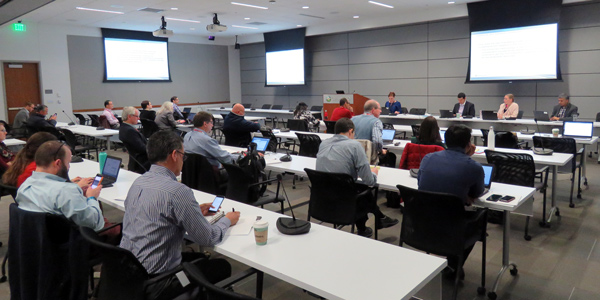By Jason Fordney
FOLSOM, Calif. — CAISO on Tuesday defended its deployment of gas price adders that have been activated frequently since last year in the face of cold weather, wildfires and concerns about pipeline outages.
The ISO implemented use of the adders — or scalars — in Southern California in July 2016 to address potential gas shortages stemming from the closure of the Aliso Canyon storage facility.
The scalars are intended to both aid regional generators in their recovery of their start-up costs and shift generation to areas in Northern California not affected by gas shortages. When activated in the real-time market, they boost the commitment proxy gas cost calculation to 175% of the day-ahead gas reference price, while gas prices in the default energy bid calculation are set to 125% of the day-ahead price.
The scalars “may not be the perfect tool, may not be the most sophisticated tool, but it’s the tool we have,” Guillermo Bautista Alderete, the ISO’s director of market analysis and forecasting, said during a Feb. 20 Market Performance and Planning Forum.
Since the scalars were implemented in July 2016, the price level of same-day gas prices in Southern California with the adders exceeded all but a very small portion of natural gas transactions, according to a CAISO staff presentation.
The scalars were deployed July 6-31, Aug. 4-7, Oct. 23-24 and from Dec. 7, 2017 to Jan. 31, 2018 — and again on Tuesday, when SoCal Citygate prices spiked to a four-year high of $25/MWh on cold weather, according to Natural Gas Intelligence.
Staff’s presentation showed that on Dec. 7, the 175% scalar shifted 2,000 MW from Southern California Edison to Pacific Gas and Electric to position the system to rely less on gas demand in Southern California. The ISO had lowered the scalars to zero on Aug. 1, 2017, after the initial summer increase, but in a Feb. 20 market notice it said it “will re-evaluate on an event-by-event basis the need for the gas price scalars adjustments.”
CAISO’s Department of Market Monitoring has recommended the ISO reduce or eliminate the adders, which it says last year caused $5 million in excess bid cost recovery payments to those resources, about $1 million of which came during Southern California wildfires, even though only a small number of market participants are using the scalars.
There were high next-day gas prices and significant same-day price volatility at the SoCal Citygate delivery point on some days in the fourth quarter, but real-time gas scalars are ineffective at reflecting same-day price volatility, nor do they significantly change the order of unit commitment, the DMM said.
Bautista Alderete said the ISO is undertaking an initiative “to have a more comprehensive policy and permanent solution of how to handle these conditions on the system.”






